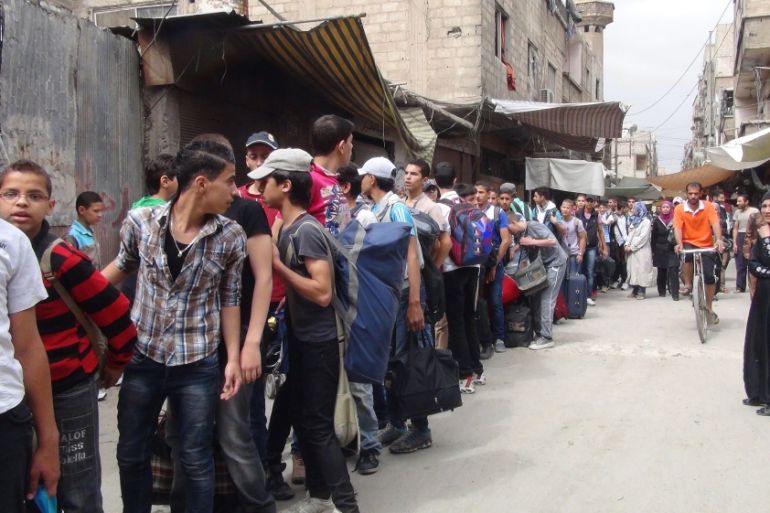UN: Syria’s Yarmouk faces typhoid outbreak
At least 11 cases of bacterial infection confirmed in Damascus district besieged by government forces.

The Syrian capital’s Yarmouk district, which has been under siege by government forces for years, is facing an outbreak of typhoid, a bacterial infection that could be fatal if not treated properly, according to the UN.
The UN agency for Palestinian refugees, UNRWA, confirmed on Wednesday at least 11 cases of the disease in Yarmouk, which is home to Palestinians and Syrians.
Keep reading
list of 4 itemsPalestinian Prisoner’s Day: How many are still in Israeli detention?
‘Mama we’re dying’: Only able to hear her kids in Gaza in their final days
Europe pledges to boost aid to Sudan on unwelcome war anniversary
UNRWA said it had been able to verify the outbreak after gaining access to residents of the district, sheltering in the nearby Yalda neighbourhood.
| Quick Facts: Typhoid |
|
About 21 million people are infected with typhoid every year. About 222,000 typhoid-related deaths occur annually worldwide, according to the World Health Organization. The disease is caused mainly by salmonella typhi bacteria in food or water contaminated with the faeces or urine of infected people. The acute illness is characterised by prolonged fever, headache, nausea, loss of appetite and constipation or sometimes diarrhoea. |
Chris Gunness, UNRWA spokesperson, said in a statement that the agency had its first access to civilians from Yarmouk since June 8.
“The number of typhoid cases the UNRWA has treated in the displaced population from the Yarmouk refugee camp in Damascus has nearly doubled,” Guness said.
“Yesterday our medical teams in the neighbouring district of Yalda saw six cases. Today we saw five, bringing to eleven the number of confirmed typhoid cases.
“Given the conditions in Yarmouk, we fear this is the tip of the iceberg.”
Yarmouk, set up as a Palestinian refugee camp in 1957, is located on the edge of the Syrian capital. Over the last two years, it has witnessed several rounds of deadly fighting between government forces and armed groups.
Yarmouk was once a thriving neighbourhood of Damascus, home to both Palestinian refugees and Syrians.
But since anti-government groups took over the district in 2013, the government imposed a blockade and the military has been bombarding the area repeatedly.
Yarmouk’s population shrank from about 160,000 to just 18,000.
The siege prompted a major humanitarian crisis, with people dying due to lack of food or access to medical care.
Several thousand civilians have been able to leave the camp but the Syrian Observatory for Human Rights monitoring group and a Yarmouk resident told the AFP news agency that up to 14,000 people are still living inside.
Gunness repeated UNRWA’s longstanding call for humanitarian access to Yarmouk.
“Never has the imperative for sustained humanitarian access been greater,” he said.
“UNRWA’s priority remains the delivery of humanitarian aid to civilians within Yarmouk itself.”